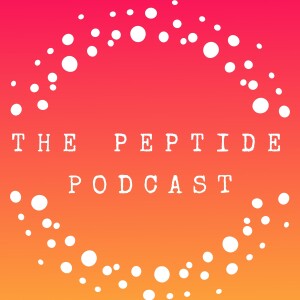
Bacteriostatic Water vs. Sterile Water for Injection
 2022-12-22
2022-12-22
Today we're going to talk about the difference between bacteriostatic water and sterile water for injection.
I get asked this question a lot. Many people think that bacteriostatic water and sterile water for injection are the same. But this is not true. When injecting peptides, it's important to know the differences between the two solutions to help keep you safe. So let's take a quick look at each one and discuss how they are similar and how each differs.
Reconstitution
First, we should review how most peptides are supplied by compounding pharmacies and peptide manufacturers. Peptides are commonly supplied in a freeze-dried (lyophilized), powdered form. This process entails removing water from a compound after it is frozen and placed under a vacuum, allowing ice to change from a solid to a vapor without passing through a liquid phase.
Before lyophilized peptides can be used in a lab or injected, they must be dissolved into a liquid solution (reconstituted). Technically, there is no "one size fits all" solvent that will dilute all peptides. Things like the pH and electrical charge of the peptide affect a peptide's solubility. But for our discussion, sterile water for injection and bacteriostatic water is usually the first choice for dissolving peptides.
What is bacteriostatic water?
Bacteriostatic water is a medical supply used to dissolve peptides that must be dissolved before injection. Bacteriostatic water is a sterile form with a pH of 5.7. It is supplied in a multi-dose container from which repeated withdrawals can be made. This is because it has 0.9% benzyl alcohol, which prevents bacterial growth.
It's recommended that after you open or use a vial of bacteriostatic water, you throw away the vial after 28 days. Peptides dissolved with bacteriostatic water should be used within the same time.
What is sterile water for injection?
Sterile water for injection is a medical supply used to dissolve peptides that need to be dissolved before injection. Sterile water for injection is supplied in a single-dose container for one-time use only. This is because sterile water doesn'tdoesn't contain antimicrobial agents to help prevent bacterial growth.
Both bacteriostatic water and sterile water for injection can be used for subcutaneous, intramuscular injections.
In a nutshell, if you're using a single-dose peptide vial, either can be used. If you are using a multi-dose vial, you should use bacteriostatic water to dilute your peptide to help prevent bacteria from growing in your peptide vial. The added benzyl alcohol in the bacteriostatic water will prevent bacteria from growing in your peptide vial for up to 28 days.
Because sterile water for injection doesn'tdoesn't have anything added to prevent bacteria from growing, you should only use it to dilute single-dose vial peptides. It should be used completely at once and then thrown away.
Thanks again for listening to The Peptide Podcast. You can find more information at pepties.com. We love having you as part of our community. If you love this podcast, please share it with your friends and family on social media. Have a happy, healthy week!
Pro Tips
We're huge advocates of using daily collagen peptide supplements in your routine to help with skin, nail, bone, and joint health. But what do you know about peptides for health and wellness?
Giving yourself a peptide injection can be scary or confusing. But we've got you covered. Check out 6 tips to make peptide injections easier. And, make sure you have the supplies you'll need. This may include syringes, needles, alcohol pads, and a sharps container.
They work to kill bacteria (bactericidal) by preventing them from making their own protective coating in your body.
More Episodes
 2024-05-11
2024-05-11
 2024-04-11
2024-04-11
 2024-03-28
2024-03-28
 2024-01-25
2024-01-25
 2024-01-18
2024-01-18
Create your
podcast in
minutes
- Full-featured podcast site
- Unlimited storage and bandwidth
- Comprehensive podcast stats
- Distribute to Apple Podcasts, Spotify, and more
- Make money with your podcast
It is Free
- Privacy Policy
- Cookie Policy
- Terms of Use
- Consent Preferences
- Copyright © 2015-2024 Podbean.com




